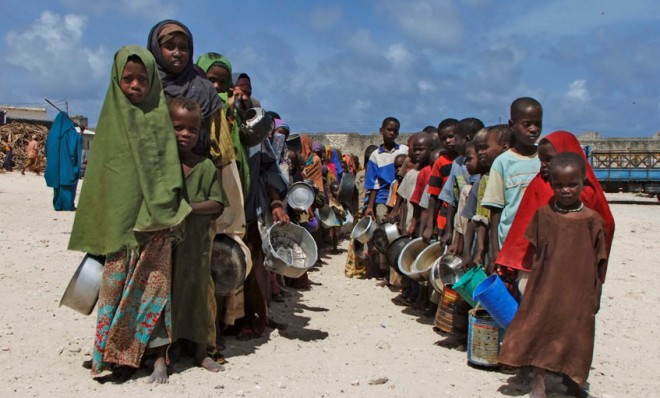How famine killed 133,000 kids in Somalia
Experts say the tragedy could have been avoided


A quarter million people died in Somalia's famine between 2010 and 2012, and more than half — 133,000 — were children under age 5, according to the first full-fledged study of the crisis. The study was jointly commissioned by the United Nations Food and Agriculture Organization and the USAID-funded Famine Early Warning Systems Network. It "confirms that we should have done more" to prevent the calamity, said Philippe Lazzarini, the U.N. humanitarian coordinator for Somalia. Why didn't the world do more to spare so many people from such an agonizing and preventable death? Here, a guide:
How bad was the famine?
It killed more people than the country's 1992 famine, which claimed 220,000 lives over 12 months (although that crisis killed a higher percentage of the population). Overall, 4.6 percent of south and central Somalia's population of 6.5 million people — including 10 percent of kids under 5 — died between October 2010 and April 2012. In some areas, including the capital, Mogadishu, the percentage of the population under 5 that was lost approached 20 percent. Twice as many Somali kids under 5 died during the crisis than in all the world's industrial countries combined. "The scale of the child mortality is really off the charts," says Chris Hillbruner of FEWS NET, a U.S.-sponsored famine-warning agency.
The Week
Escape your echo chamber. Get the facts behind the news, plus analysis from multiple perspectives.

Sign up for The Week's Free Newsletters
From our morning news briefing to a weekly Good News Newsletter, get the best of The Week delivered directly to your inbox.
From our morning news briefing to a weekly Good News Newsletter, get the best of The Week delivered directly to your inbox.
What caused the disaster?
The period from July 2010 to June 2011 was the driest in the Horn of Africa in six decades. It decimated harvests and killed livestock, leaving thousands of families destitute. Jobs vanished. Warnings of looming starvation went out in 2010, but there was no significant influx of aid until famine was officially declared in July 2011. By that time, 120,000 people had already died. "The suffering played out like a drama without witnesses," Lazzarini said.
Why didn't aid get there sooner?
There were several contributing factors. The Islamic extremist group Al-Shabab essentially banned the delivery of food aid to some areas. Thousands of Somalis were forced to walk up to hundreds of miles to reach camps in Kenya, Ethiopia, and Mogadishu to get help. Thousands of families lost their kids along the way. Still, U.N. officials say, other countries could have done more to help.
A free daily email with the biggest news stories of the day – and the best features from TheWeek.com
Why didn't other countries step in?
One reason, Hillbruner tells The Associated Press, is simply that the world has grown numb to the continuing suffering of the Somali people. "I think that one of the key issues is that there was this normalization of crisis in south-central Somalia," he says, "and that I think the international community has become used to levels of malnutrition and food insecurity in southern Somalia that in other parts of the world would be considered unacceptable."
Is the crisis over?
The situation has improved dramatically. After the aid flowed in, the famine was declared over in February 2012. Since then, Al-Shabab has been forced out of Mogadishu. It controls far less territory than it did at the height of the crisis. The most vulnerable of the country's citizens aren't out of danger entirely, though, as child mortality and food security are still major threats. According to the U.N., 2.7 million people in Somalia still need life-saving assistance.
Harold Maass is a contributing editor at The Week. He has been writing for The Week since the 2001 debut of the U.S. print edition and served as editor of TheWeek.com when it launched in 2008. Harold started his career as a newspaper reporter in South Florida and Haiti. He has previously worked for a variety of news outlets, including The Miami Herald, ABC News and Fox News, and for several years wrote a daily roundup of financial news for The Week and Yahoo Finance.
-
 Political cartoons for January 4
Political cartoons for January 4Cartoons Sunday's political cartoons include a resolution to learn a new language, and new names in Hades and on battleships
-
 The ultimate films of 2025 by genre
The ultimate films of 2025 by genreThe Week Recommends From comedies to thrillers, documentaries to animations, 2025 featured some unforgettable film moments
-
 Political cartoons for January 3
Political cartoons for January 3Cartoons Saturday's political cartoons include citizen journalists, self-reflective AI, and Donald Trump's transparency
